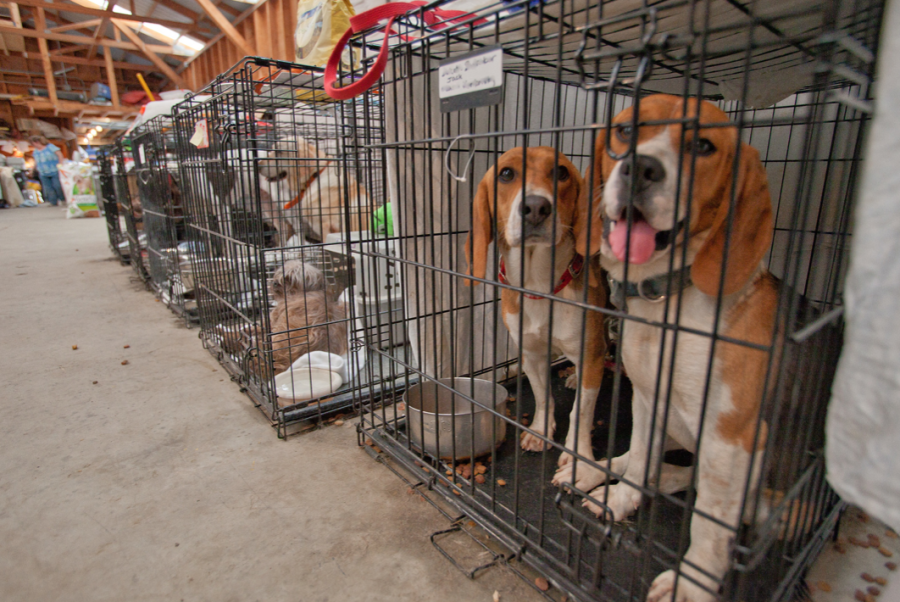How Do Animal Shelters Work?
While sitting in a cage and purring, a cat moves her tail and cocks her ears up. A pair of eyes stare at people who just pass by. A question pops into her mind: will they be the one?
There are about 70 million stray animals in the United States. However, only about seven million of them can go to animal shelters. Not all animal shelters are alike, and they have different operating systems. One type of animal shelter is the municipal shelter, owned and run by the local government and supported by tax dollars. They protect animals from abuse and cruelty, but they also are needed to guarantee that citizens are seperated from potential health risks posed by animals, such as food safety and zoonotic diseases. Hence, sometimes these shelters take on the role of “animal control.”
Animal shelters can also be privately owned, developing their individual policies and missions. Full-service private nonprofit shelters rely more on public donations and accept stray animals. With the ability to cultivate active adoption, education, and spay/neuter programs, they try to achieve a “low-kill” status, keeping animals alive as long as possible. Another type is limited admission nonprofit shelters, also called “no-kill”, and they prefer to accept selected animals that are easy to adopt. When limited admission nonprofit shelters experience a shortage of resources, they need to turn some animals away due to their age, health, or behavior. Those animals will go to open admission shelters that take in ill, aggressive, and injured animals. According to How Stuff Works, “More than half of all cats and dogs that enter shelters are put to sleep because they are too sick or old, or they don’t find homes.”
Besides animal shelters, animal rescue groups also take accountability to protect animals. As private organizations, they provide animals a temporary home environment, allowing them to practice social interaction and spend time with humans. People can interact with those pets before adopting them.
Running animal shelters requires a huge amount of funding and donations, and these funds are broken down into three major parts: animals, employees, and shelter maintenance. Animal shelters aim to protect animals, including providing food, neutering, first-year vaccines, medicines, and simple animal supplies. Most funds animal shelters received are from local governments and community donations. However, when animal shelters are short of financial support, they may need to euthanize some animals.
Shelters need employees and volunteers to maintain operations, and employee salaries are another output. Some animal shelters have their own on-site veterinarian programs, with veterinary technicians, animal control workers, and directors of development. They need to offer liability insurance and workers’ compensation insurance. Other shelters that do not have this program will collaborate with veterinary clinics. “Collaboration between veterinarians and rescues can help attract clients by showing the goodwill a clinic performs for the community,” says WBI Studies Repository.
Vets who work in the clinic may or may not be volunteers working at animal shelters or animal rescue groups during their spare time. However, “Rescues need to realize that while veterinarians will often discount their services for them, they also need to make a respectable living,” Understanding Volunteerism in an Animal Shelter Environment explains.
Shelter maintenance needs to ensure decent living conditions for workers and animals. Shelters need sponsorship to maintain working heating and air condition units. Utilities, pest control, and dog runs are taken into consideration as well.
The best ending for animals in the shelter is to be adopted by a responsible and loving family. The first step is always to submit an application. According to How Stuff Works, “Before you can pick out your new pet, you’ll have to fill out an often extensive application, which includes basic information like where you live and your age, as well as your pet ownership history (including veterinary records), and a personality profile.”
There are many animal shelters and non-profit organizations in Philadelphia that serve pets and provide homes for street animals. Morris Animal Refuge, the oldest animal shelter in the country, was founded in 1874. It is committed to adoption, education, and high-quality care for animals in need. Philadelphia Animal Welfare Society (PAWS), a non-profit organization and the city’s largest rescue group, saves Philadelphia’s homeless and at-risk pets. The Animal Care and Control Team (ACCT) is another animal shelter that serves Philadelphia by contract, and they provide programs like adoption, foster and volunteer programs, and owner surrender prevention resources.
Karen Davison, an author and an Associate Member of the Animal Care College in England, said, “Saving one dog will not change the world, but surely for that one dog, the world will change forever.”























